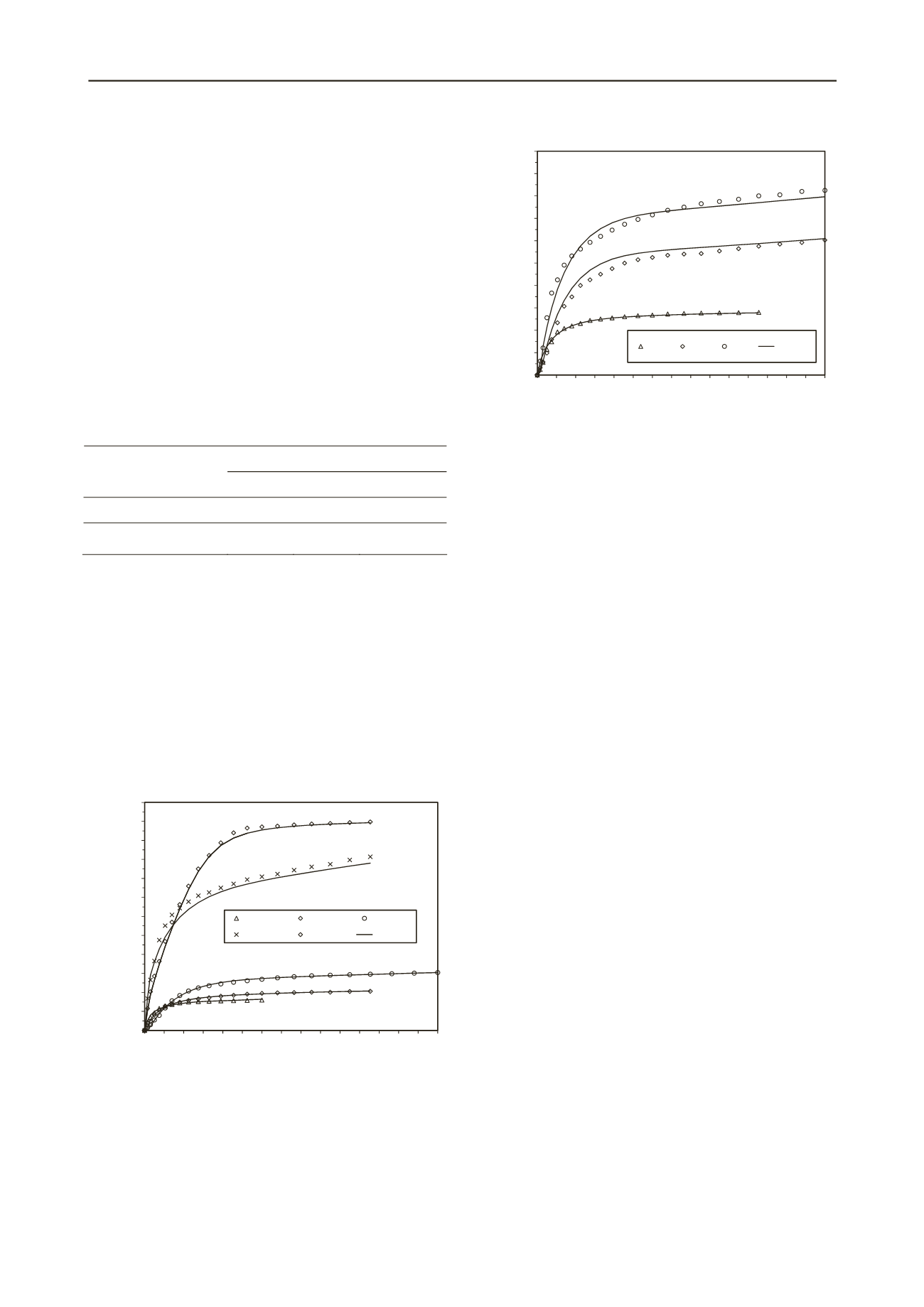
800
Proceedings of the 18
th
International Conference on Soil Mechanics and Geotechnical Engineering, Paris 2013
The coefficient of correlation,
r
, is a measure that is used to
determine the relative correlation between the predicted and
observed outputs. However,
r
sometimes may not necessarily
indicate better model performance due to the tendency of the
model to deviate toward higher or lower values, particularly
when the data range is very wide and most of the data are
distributed about their mean (Das and Sivakugan 2010).
Consequently, the coefficient of determination,
R
2
, is used as it
can give unbiased estimate and may be a better measure for
model performance. The MAE eliminates the emphasis given to
large errors, and is a desirable measure when the data evaluated
are smooth or continuous. The performance measures in Table 1
indicate that the optimum RNN model performs well and has
good prediction accuracy in both the training and validation
sets. Table 1 also indicates that the RNN model has consistent
performance on the validation set with that obtained on the
training set.
Table 1. Performance results of the optimal RNN model.
Performance measures
Data sets
r
R
2
MAE
(kN)
Training
0.998
0.996
34
Validation
0.994
0.988
38
The performance of the optimum RNN model in the training
and testing sets is further investigated graphically, as shown in
Figures 4 and 5. It should be noted that, for brevity, only five of
the most appropriate simulation results in the training set are
given in Figure 4. These five simulations are chosen because
they reflect the entire range of the in-situ pile load-settlement
tests used in this study. As can be seen in Figures 4 and 5,
excellent agreement between the actual pile load tests and the
RNN model predictions is obtained, in both the training and
validation sets. The nonlinear relationships of the load-
settlement response are well predicted, and the results
demonstrate that the RNN model has a strong capability to
simulate the behavior of steel driven piles.
0
400
800
1200
1600
2000
2400
2800
3200
3600
4000
4400
4800
0 1 2 3 4 5 6 7 8 9 10 11 12 13 14 15
Load (kN)
Pile settlment/pile diameter (%)
Test 1
Test 2
Test 3
Test 4
Test 5
RNN Model
Training set
Figure 4. Some simulation results of RNN model in the training set.
0
200
400
600
800
1000
1200
1400
1600
1800
2000
0 1 2 3 4 5 6 7 8 9 10 11 12 13 14 15
Load (kN)
Pile settlment/pile diameter (%)
Test 1
Test 2
Test 3
RNN Model
Validation set
Figure 5. Simulation results of RNN model in the validation set.
4. CONCLUSION
This work presented in this paper has used a series of full-scale
in-situ pile load-settlement tests and CPT data collected from
the literature to develop a recurrent neural network (RNN)-
based model for simulating the load-settlement response of steel
driven piles. The results indicate that the RNN model was
capable of simulating the behavior of steel driven piles
reasonably well. The graphical comparison of the load-
settlement curves between the RNN model and experiements
showed an excellement agreement and indicates that the RNN
model can capture the highly non-linear load-settlement
response of steel driven piles. To facilitae the use of the
developed RNN model, it is translated into C++ code and
executable program, which are made available upon request.
5. REFERENCES
Caudill M. 1988. Neural networks primer, Part III.
AI Expert
3 (6), 53-
59.
Das S.K. and Sivakugan N. 2010. Discussion of: intelligent computing
for modeling axial capacity of pile foundations.
Canadian
Geotechnical Journal
47, 928-930.
Eslami A. 1996. Bearing capacity of piles from cone penetration test
data. PhD Thesis, University of Ottawa, Ottawa, Ontario.
Fausett L.V. 1994.
Fundamentals neural networks: Architecture,
algorithms, and applications
, Prentice-Hall, Englewood Cliffs, NJ.
Fellenius B.H. 1980. The analysis of results from routine pile load tests.
Ground Engineering
13 (6), 19-31.
Fellenius B.H. 1988. Unified design of piles and pile groups.
Transportation Research Record
1169, 75-81.
Hornik K., Stinchcombe M. and White H. 1989. Multilayer feedforward
networks are universal approximators.
Neural Networks
2, 359-
366.
Jordan M.I. 1986. Attractor dynamics and parallesim in a connectionist
sequential machine.
Proceedings of the 8th Annual Conference of
the Cognitive science Society
, Amherst, MA, 531-546.
Reese L.C., Isenhower W.M. and Wang S.T. 2006.
Analysis and design
of shallow and deep foundations
, John Wiley & Sons, New Jersey.
Rumelhart D.E., Hinton G.E. and Williams R.J. 1986. Learning internal
representation by error propagation. arallel Distributed Processing,
Rumelhart D.E. and McClelland J.L., eds., MIT Press, Cambridge.
Shahin M.A. and Indraratna B. 2006. Modelling the mechanical
behaviour of railway ballast using artificial neural networks.
Canadian Geotechnical Journal
43 (1), 1144-1152.
Shahin M.A., Jaksa M.B. and Maier H.R. 2009. Recent advances and
future challenges for artificial neural systems in geotechncial
engineering applications.
Journal of Advances in Artificial Neural
Systems
, doi: 10.1155/2009/308239.
Ward. 2007.
NeuroShell 2 Relaese 4.2
, Ward Systems Group, Mass.


